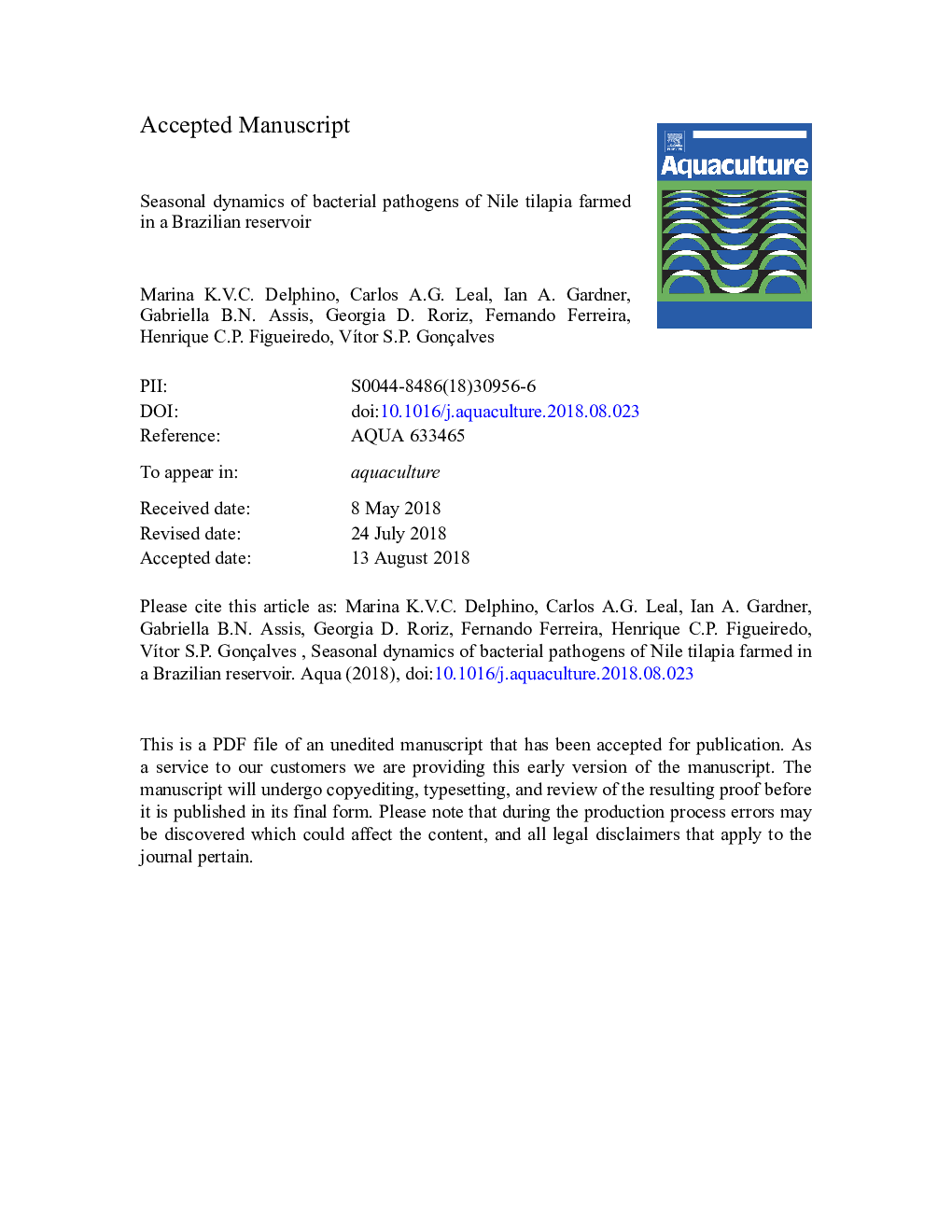| Article ID | Journal | Published Year | Pages | File Type |
|---|---|---|---|---|
| 10137278 | Aquaculture | 2019 | 36 Pages |
Abstract
Fish aquaculture is rapidly growing in Brazil. Nile tilapia is the most cultivated species, mainly through an intensive production system carried out in floating cages installed in large reservoirs. However, fish pathogens pose a major challenge to production chain sustainability, and tilapia farmers may have limited knowledge of prevailing health problems and rarely implement effective biosecurity practices to prevent introduction of economically important infectious agents. This study aimed to identify the key disease risks of tilapia farming in a tropical reservoir and characterize the dynamics of the prevalent pathogens, as a basis for development of effective control measures for tilapia health and surveillance programs. From August 2015 to October 2016, a longitudinal study was carried out at the Três Marias reservoir, in the municipality of Morada Nova de Minas in the southeast of Brazil. Daily and monthly data were collected from six out of 32 existing fish farms, including fish samples, mortality counts, and measurements of temperature and water quality parameters. The main bacteria detected were Streptococcus agalactiae, infecting mostly adult tilapia throughout the period, with higher frequency as the average temperature increased, and Francisella noatunensis subsp. orientalis (Fno), infecting mainly younger tilapia, only during the cooler months. Coinfections with multiple pathogens were detected in 33 fish. The detection of Fno in one farm in two consecutive winters, after months of unfavorable water temperature conditions and without evidence of introduction of infected stock, strengthens the case for investigating if this pathogen can survive and remain infective causing new outbreaks. Furthermore, variation in mortality was likely associated with the dynamics of the studied pathogens.
Related Topics
Life Sciences
Agricultural and Biological Sciences
Aquatic Science
Authors
Marina K.V.C. Delphino, Carlos A.G. Leal, Ian A. Gardner, Gabriella B.N. Assis, Georgia D. Roriz, Fernando Ferreira, Henrique C.P. Figueiredo, VÃtor S.P. Gonçalves,
